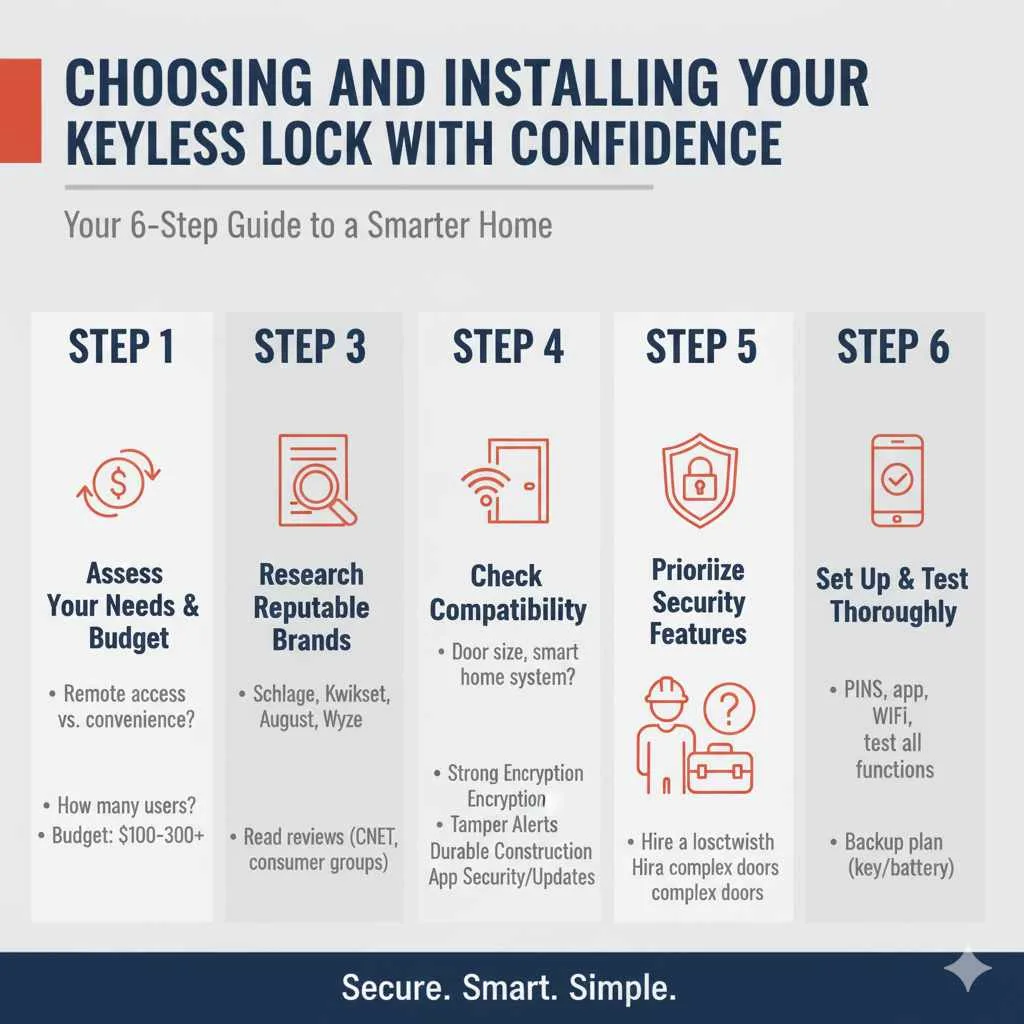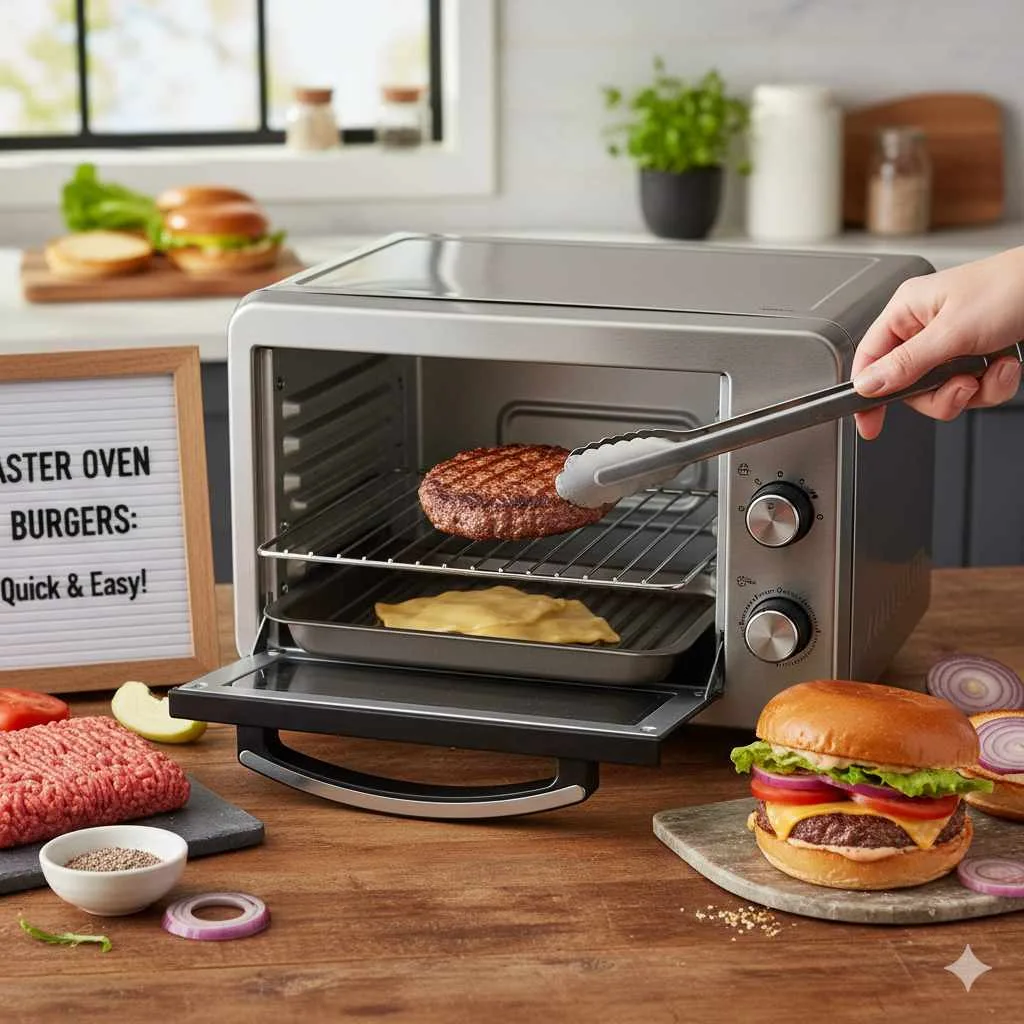Yes, keyless door locks can be very safe when chosen wisely and installed correctly. Modern keyless entry systems offer robust security features that often surpass traditional locks, providing convenience without compromising your home’s protection.
Hello there, lovely homeowners and design enthusiasts! Are you curious about stepping into the future of home security with a keyless door lock? Perhaps the thought of ditching your keys for a keypad code or a tap of your smartphone sounds wonderfully modern, but a little voice in your head whispers about security. It’s totally natural to wonder if these high-tech gadgets are as safe as they seem. We all want our homes to be our cozy, secure sanctuaries. The good news is that navigating the world of keyless locks doesn’t have to be complicated. I’m here to break it down for you, making sure you feel confident and informed. Let’s explore together how to choose a keyless lock that offers both peace of mind and a touch of modern flair for your beautiful home!
Are Keyless Door Locks Safe? A Beginner’s Guide to Proven Security
It’s easy to feel a little overwhelmed when you first look at all the shiny new keyless door lock options. The idea of a lock that doesn’t use a traditional metal key can spark questions. Are these newfangled locks really going to keep my home safe? Will someone just hack into it? These are valid concerns, and I’m here to tell you that the answer is a resounding yes, they can be incredibly safe, provided you make informed choices. Think of it like choosing beautiful new curtains or a stylish rug – a little research goes a long way in finding the perfect fit for your home and lifestyle. We’ll explore the technology, the security features, and the simple steps you can take to ensure your keyless door lock is a secure and stylish addition to your home.

Understanding the Basics: How Keyless Locks Work
Before we dive into what makes them secure, let’s get a basic understanding of how these locks operate. Unlike old-school deadbolts that rely on a physical key, keyless locks use electronic means to grant access. This can include:
- Keypads: You enter a personal identification number (PIN) to unlock the door.
- Smart Locks: These connect to your home’s Wi-Fi or Bluetooth and can be controlled via a smartphone app. They often also include a keypad.
- RFID/Key Fob Locks: You might tap a card or a small fob against a reader to unlock.
- Biometric Locks: These use fingerprints or other unique personal characteristics for access.
The beauty of these systems is their flexibility. Want to let a trusted friend in while you’re away? You can often grant temporary access codes through an app. Worried you’ve forgotten to lock the door? A quick check on your phone can tell you and even allow you to lock it remotely. It’s like having a super-smart doorman at your fingertips!
Examining Keyless Lock Security Features: What to Look For
When we talk about whether keyless door locks are safe, we’re really talking about the technology and features they employ to prevent unauthorized access. Reputable manufacturers invest heavily in making their products secure. Here are some key features that contribute to their proven security:
Encryption and Data Protection
For smart locks that connect to your network, encryption is crucial. It’s like a secret code that scrambles the information transmitted between your lock, your app, and your home network. Look for locks that use strong encryption standards, such as AES (Advanced Encryption Standard). Leading smart lock brands typically employ bank-grade encryption to protect your data from prying eyes. Think of it as a super-secure digital handshake that only the right devices can perform.
Tamper Alerts and Notifications
One of the advantages of smart locks is their ability to communicate. If someone tries to tamper with the lock, force it open, or even enters incorrect codes too many times, you can receive instant alerts on your smartphone. This proactive notification allows you to take immediate action, which is a significant deterrent to potential intruders. For instance, a notification might read, “Tampering detected at front door.”
Activity Logs
Many smart locks keep a detailed log of all lock and unlock events. You can see who entered and at what time. This can be incredibly useful for families, especially if you have teenagers or need to confirm when a cleaner or pet sitter has been in and out. This transparency adds another layer of security and control.
Physical Build Quality
Beyond the electronics, the physical construction of the lock matters. High-quality keyless locks are made from durable materials like solid metal that can withstand physical attacks. They are designed to be robust and resistant to common brute-force methods. Always check product reviews for comments on the lock’s sturdiness and material quality.
Secure Installation and Setup
Even the most secure lock can be vulnerable if installed incorrectly. It’s about ensuring a snug fit and that all components are properly secured to the door and frame. If you’re not comfortable with DIY, hiring a professional locksmith for installation is a smart investment. They have the expertise to ensure everything is fitted perfectly, maximizing the lock’s security. For DIY enthusiasts, manufacturers provide detailed manuals, and many offer video tutorials to guide you through the process.
Keyless Lock Vulnerabilities (and How to Mitigate Them)
While keyless locks offer excellent security, like any technology, they aren’t completely immune to potential vulnerabilities. The good news is that these are often easily managed with a bit of awareness and proactive steps.
Brute-Force Attacks on Keypads
Prying ears might try to listen to you enter your code, or a determined individual might try every possible combination. To combat this:
- Use long PINs: Opt for 6 digits or more.
- Change defaults immediately: Never use the factory-set code.
- Use privacy features: Some locks have screens that obscure number entry, or require random digits to be entered before your PIN.
- Be aware of your surroundings: Shield the keypad when entering your code in public areas.
Wi-Fi and Bluetooth Hacking
Smart locks rely on wireless connections, which could theoretically be a target. However, reputable manufacturers use advanced security protocols to make this incredibly difficult.
- Keep your Wi-Fi network secure: Use a strong password for your home Wi-Fi.
- Update firmware regularly: Manufacturers release updates to patch security vulnerabilities. Most smart locks do this automatically or with a simple app prompt.
- Use Bluetooth when possible: Bluetooth connections are generally harder to hack remotely than Wi-Fi for many smart lock models.
For more details on the security measures taken by major manufacturers, you can often find detailed security whitepapers or FAQ sections on their official websites. For instance, Silicon Labs, a leader in IoT technology, provides insights into the security of Bluetooth, which powers many connected devices.
Physical Bypassing
Like any lock, a keyless lock can be physically attacked. However, high-quality models are built to resist this.
- Choose robust materials: Look for locks made from solid, strong metals.
- Ensure proper installation: A well-fitted lock with strong strike plates on the door frame is harder to pry open.
- Consider a deadbolt backup: Some smart locks integrate with a traditional deadbolt, offering a double layer of security.
Comparing Keyless Locks: What Works Best for You?
Choosing the right keyless lock depends on your needs, budget, and comfort level with technology. Here’s a quick look at popular types and their security considerations:
Smart Locks with Keypads
These are a popular choice, offering both PIN entry and app control. Security is generally excellent, especially with strong manufacturers.
- Pros: Remote access, activity logs, temporary codes, strong security features.
- Cons Can be more expensive, require a Wi-Fi connection for full functionality.
Digital Keypads (Non-Smart)
These locks only use a PIN code and don’t connect to your Wi-Fi. They are simpler and often more affordable.
- Pros: Easy to use, good security against basic entry, no Wi-Fi required.
- Cons No remote access or notifications, limited access management.
Biometric Locks
These use fingerprints for access, offering a unique and convenient entry method.
- Pros: Highly secure (your fingerprint is unique), no codes to remember or forget.
- Cons: Can be expensive, may not work well with wet or dry fingers, less common for general home use.
Key Fob/Card Entry
Similar to access cards used in offices, these are simple and quick.
- Pros: Very fast entry, easy for multiple users.
- Cons: Key fobs/cards can be lost or stolen, less common as a primary home lock system.
Here’s a table to help visualize some key differences in security and features:
| Lock Type | Primary Access Method | Remote Access | Activity Logs | Typical Security Level | Beginner Friendliness |
|---|---|---|---|---|---|
| Smart Lock (with Keypad) | PIN Code / Smartphone App | Yes | Yes | Very High | High |
| Digital Keypad (Non-Smart) | PIN Code | No | No (usually) | High | Very High |
| Biometric Lock | Fingerprint | Varies (often Yes with app integration) | Varies (often Yes with app integration) | Very High | Medium (depends on app) |
| Key Fob/Card Entry | Fob/Card Tap | Varies (often No for basic models) | Varies (often No for basic models) | Medium to High | High |
Choosing and Installing Your Keyless Lock with Confidence
Selecting a keyless lock shouldn’t feel like a gamble. It’s about making informed decisions that align with your home’s needs. Here’s a simple, step-by-step approach to help you choose and install with confidence:
Step 1: Assess Your Needs and Budget
Before you shop, think about what’s most important to you. Do you want to check your door from your office? Or are you primarily looking for a more convenient way to get into your home without fumbling for keys? How many people will need access? What’s your budget? Keyless locks range from around $100 to $300 or more, depending on features.
Step 2: Research Reputable Brands
Stick to well-known brands that have a good track record for security, reliability, and customer support. Some leading brands in smart home security include:
- Schlage
- Kwikset
- August Smart Lock
- Yale
- Wyze
Read recent reviews, paying attention to comments about security, ease of use, and customer service. Websites like CNET and consumer advocacy groups often provide objective reviews.
Step 3: Check Compatibility
Ensure the lock you choose will fit your existing door. Most standard doors accommodate common lock sizes, but it’s always wise to measure your door’s backset, bore hole diameter, and door thickness. Also, consider if you want it to work with your existing smart home system (like Amazon Alexa or Google Home). If you’re opting for a smart lock, check your home’s Wi-Fi signal strength at the door. A weak signal can lead to connectivity issues. The Home Assistant community, for example, offers extensive discussions and guides on network reliability for smart homes.
Step 4: Prioritize Security Features
As discussed, look for strong encryption, tamper alerts, and durable physical construction. For keypad locks, ensure the buttons are robust and not prone to wear that could reveal frequently used numbers. For smart locks, verify the strength of their app security and update policies.
Step 5: Installation – DIY or Pro?
Most keyless locks are designed for relatively easy DIY installation, often requiring just a screwdriver. Manufacturers provide clear instructions and often have video tutorials available online. If you’re not comfortable using tools or have an older, perhaps non-standard door, hiring a professional locksmith is a great way to ensure correct and secure installation. Their expertise guarantees the lock is fitted perfectly, maximizing its physical security.
Step 6: Set Up and Test Thoroughly
Once installed, follow the manufacturer’s instructions to set up your PIN codes, connect to Wi-Fi (if applicable), and download the app. Test all functions thoroughly: enter your codes, use the app to lock and unlock, and try out any temporary access codes you create. Test it from different distances if it’s a smart lock. It’s also a good idea to have a backup plan – some smart locks have a hidden key override, and some non-smart ones just have a battery backup. Ensure you know how to access this if needed.

Frequently Asked Questions About Keyless Door Lock Safety
Let’s tackle some common questions you might have.
Q1: Can someone really hack my keyless door lock?
It’s highly unlikely for well-made, reputable smart locks. Manufacturers use strong encryption and security protocols to protect against hacking. Keeping your Wi-Fi network secure and updating your lock’s firmware are key to maintaining this protection.
Q2: What happens if the battery dies on my keyless lock?
Most electronic locks provide plenty of warning before the battery dies, usually through app notifications or the lock itself beeping. Many have a standard 9-volt battery terminal on the outside that you can touch with a battery to power the lock long enough to enter your code.
Q3: Are keyless locks reliable in all weather conditions?
Most keyless locks are designed to withstand various weather conditions, but extreme temperatures or direct exposure to heavy moisture might affect performance over time. Check the product specifications for the operating temperature range and water resistance (IP rating) if your door is exposed.
Q4: Is it safe to give a temporary code to a guest or service provider?
Yes, this is one of the biggest benefits of smart locks! You can create time-sensitive codes (e.g., only active for a few hours) and easily revoke them once they are no longer needed. This is much safer than handing over a physical key that can be lost or copied.
Q5: How do I reset a keyless lock if I forget my code or want to change it?
Most keyless locks have a reset button, typically located inside the lock mechanism. You will usually need to remove the interior cover to access it. Refer to your lock’s manual for specific instructions, as the process can vary by brand and model.
Q6: Which is more secure: a traditional deadbolt or a keyless lock?
It depends on the quality. A high-quality, well-installed keyless lock with advanced features can be more secure than a basic traditional deadbolt, especially regarding unauthorized duplication of keys and the ability to monitor access. However, a top-tier traditional deadbolt is still a very secure option.
Q7: What are ‘man-in-the-middle’ attacks, and are keyless locks vulnerable?
A ‘man-in-the-middle’ (MITM) attack is a type of cyberattack where a hacker intercepts communication between two parties. Reputable smart lock manufacturers protect against this by using strong encryption and authentication protocols. Ensuring your chosen lock uses up-to-date security standards is crucial.
Conclusion
Welcome to a world where convenience meets security, and your home’s entrance is both stylish and smart. Moving beyond traditional keys opens up a realm of possibilities for managing access to your sanctuary. From the satisfying click of a code being accepted to the seamless unlock via your smartphone, keyless door locks offer a modern upgrade that truly enhances everyday living. We’ve explored how advanced encryption, tamper alerts, activity logs, and robust physical designs contribute to their proven safety. Remember, the perceived vulnerability of any technology often stems from a lack of understanding or poor implementation. When you approach choosing and installing a keyless lock with the same care you’d put into selecting a beautiful piece of furniture or ensuring proper paint finishes, you’re setting yourself up for success.








Leave a Reply